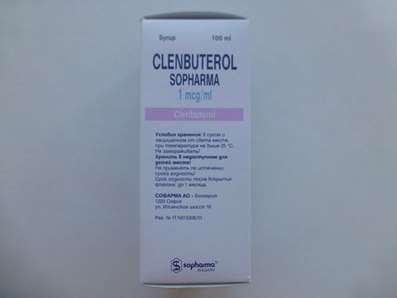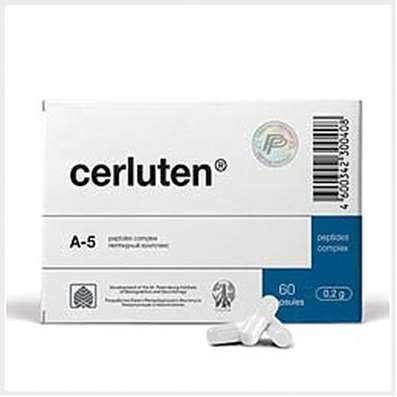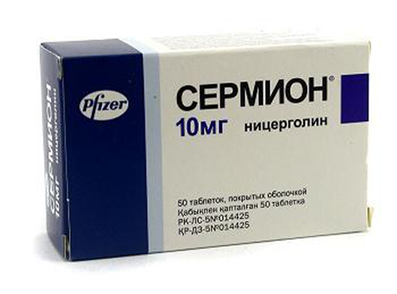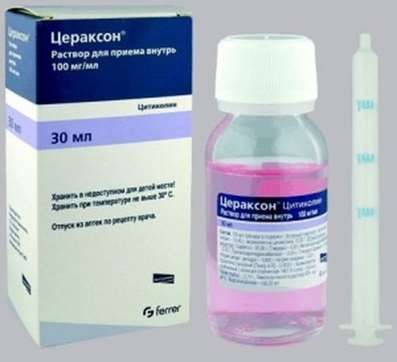Instruction for use: Vazaprostan
I want this, give me price
Dosage Form:lyophilisate for solution for infusion
Active substance:
Alprostadil * (Alprostadilum)
ATX
C01EA01 Alprostadil
Pharmacotherapeutic groups:
Prostaglandins, thromboxanes, leukotrienes and their antagonists
Angioprotectors and proofreaders microcirculation
The nosological classification (ICD-10)
I70.2 Atherosclerosis of arteries: arteriosclerosis obliterans; Arteriosclerosis peripheral arteries; Atherosclerosis of the arteries of the lower extremities; Atherosclerosis of peripheral arteries; Atherosclerosis limbs; Occlusive disease of the lower extremities; arteriosclerosis obliterans; Arteriosclerosis obliterans of lower limb arteries; Atherosclerosis obliterans of the upper limbs; Arteriosclerosis obliterans of lower extremities; Atherosclerosis of arteries; limb arteriopathy; Arteriosclerosis obliterans limbs; arteriosclerosis obliterans
I73.0 Raynaud's Syndrome: Raynaud's syndrome Leriche; Raynaud's disease; Raynaud's phenomenon; RaynaudLeriche syndrome; Raynaud's disease; Raynaud's syndrome with trophic disorders; Peripheral angiopathy
I73.1 thromboangiitis obliterans [Buerger's disease]: Berger's disease; thromboangiitis obliterans; trombangiit; thromboangiitis obliterans; Buerger's disease
I73.8 Other specified peripheral vascular disease: Syndrome of intermittent claudication; endarteritis obliterans; acrocyanosis; vasoconstriction; occlusive disease; Intermittent claudication; Disorders of vascular innervation; Spasm of peripheral arteries; Arterial angiopathy; Venous insufficiency and its complications; Spasm of peripheral vessels; The spasm of coronary vessels; endarteritis; cooling stop; Occlusal disorders of peripheral circulation; Peripheral vascular occlusion
I77.1 Arteriostenosis: Occlusive arterial disease; Peripheral arterial occlusive disease;Peripheral arterial
I77.6 Unspecified Arteritis: aortoarteriit; vasculitis; Neateroskleroticheskoe coronary arteries
Q24.8 Other specified congenital heart abnormalities: Anomalies of the heart of the small; tricuspid regurgitation
Structure and Composition
Valium for drug infusion solution (48.2 mg) -1 amp.
alprostadil (in conjunction with alfadeksom) - 20 g
Excipients: lactose; alfadeks
in box 1 blisters with 10 ampoules.
Characteristics
White lyophilisate is collected at the bottom of the ampoule, it forms a layer about 3 mm thick. After complete dissolution of the lyophilizate in saline - transparent colorless liquid.
Pharmacology
Mode of action - vasodilator, antiagregatine.
PGE1 preparation improves microcirculation and peripheral circulation, has vasoprotective action. When administered systemically, it causes relaxation of smooth muscle fibers, has a vasodilator effect reduces peripheral vascular resistance without changing blood pressure. It is noted reflex increase in cardiac output and heart rate. It enhances the elasticity of the erythrocyte, decrease platelet aggregation and neutrophil activity, enhances fibrinolytic activity of blood. It has a stimulating effect on the smooth muscles of the intestine, bladder, uterus; inhibits gastric acid secretion.
Pharmacokinetics
PGE1 is applied in a complex with alpha-cyclodextrin / or / a. During the preparation of the complex solution of the drug breaks down into its constituent parts - PGE1 and alpha-cyclodextrin. With on / in a therapeutically effective concentration of active agent is achieved shortly after the beginning of administration, and the plasma Cmax - 2 hours from the start of administration. PGE-1 is an endogenous substance with an extremely short T1 / 2 - concentration in plasma is returned to the original level within 10 seconds after cessation of administration. PGE 1 biotransformation process occurs primarily in the lungs, with the "first pass" through the lungs metabolized 60-90% of the active substance to form the major metabolites - 15-keto - PGE1, 15-keto - PGE0 and PGE0. Major metabolites excreted by the kidney - 88% and in the gastrointestinal tract - 12% within 72 hours of plasma C protein binds 93% PGE1.. Alpha-cyclodextrin has a T1 / 2 of about 7 minutes, excreted by the kidneys unchanged.
Indications
Chronic obliterating diseases of arteries III and stage IV (according to Fontaine classification).
Contraindications
Hypersensitivity to alprostadil, and other components of the drug, chronic heart failure, marked disturbances of the heart rhythm, coronary artery disease exacerbation, myocardial infarction (within the next 6 months), pulmonary edema, infiltrative pulmonary disease, chronic obstructive pulmonary disease, liver dysfunction (elevated AST ALT and GGT) and a history of liver disease as well as diseases accompanied by an increased risk of bleeding and hemorrhage (stomach ulcer or duodenal ulcer, severe brain vascular proliferative retinopathy with a tendency to bleeding, major trauma, etc. ), concomitant therapy vasodilator and anticoagulant agents, pregnancy, breastfeeding.
Pregnancy and breast-feeding
Contraindicated. At the time of treatment should stop breastfeeding.
Side effects
From the nervous system: headache, convulsions, dizziness, fatigue, feeling of malaise, disturbance sensitivity of the skin and mucous membranes.
Cardio-vascular system: decrease in blood pressure, chest pain, cardiac arrhythmias, AV block.
From the digestive system: a feeling of discomfort in the epigastric region, diarrhea phenomenon - diarrhea, nausea, vomiting.
From the musculoskeletal system: hyperostosis of long bones (for the treatment of more than 4 weeks).
Local reactions: pain, swelling, erythema, sensitivity infringement, phlebitis (proximal to the place I.V. the introduction).
Laboratory indicators: leukocytosis, leukopenia, increased titer of C-reactive protein, increased transaminases.
Other: increased sweating, hyperthermia, swelling of the limbs, which is held in the vein infusion.
Rare: joint pain, confusion, convulsions central origin, fever, chills, bradypnea, arthralgia, psychosis, renal failure, anuria. A few cases of pulmonary edema and acute left ventricular failure.
Very rarely (up to 1% of cases): shock, acute heart failure, hyperbilirubinemia, bleeding, drowsiness bradypnea, decreased respiratory function, tachypnea, anuria, renal failure, hypoglycemia, ventricular fibrillation of the heart, AV block II degree, supraventricular arrhythmia, stress neck muscles, irritability, hypothermia, hypercapnia, flushing of the skin, hematuria, peritoneal signs, tachyphylaxis, hyperkalemia, thrombocytopenia, anemia.
Allergic reactions: skin rash, pruritus.
Side effects associated with the use of the drug or with the catheterization procedure disappear after dose reduction or discontinuation of the infusion.
Interaction
Vazaprostan® may enhance the effect of antihypertensive drugs, vasodilators and antianginal drugs. Concomitant use Vazaprostana® in patients taking drugs that prevent blood clotting (anticoagulants, platelet aggregation inhibitors), may increase the chance of bleeding. In combination with cefamandole, cefoperazone, tsefotetanom and thrombolytic - increases the risk of bleeding. Sympathomimetics - epinephrine, norepinephrine, - reduce the vasodilator effect.
Please, be aware that drug interactions are possible in the event that the above formulations were applied shortly before Vazaprostan® therapy was started.
Dosage and Administration
Intra-arterial injection. Dissolve contents of one vial of lyophilizate Vazaprostana® (corresponding to 20 mg of alprostadil) in 50 mL of saline.
In the absence of other requirements Vazaprostan® half of the vial (equivalent to 10 mcg alprostadil) introducing / and for 60-120 minutes using an infusion device. If necessary, especially in the presence of necrosis, under the strict control of tolerance may increase the dose to 20 mcg alprostadil (the contents of 1 ampoule). This dosage is typically used for a single daily infusion.
If Intraarterial and injected through an infusion catheter is performed, depending on the severity of the disease and tolerability recommended dose of 0.1-0.6 ng / kg / min with the introduction of the drug for 12 hours using an infusion device (corresponds to 0,25- 1.5 ampoules vazaprostan).
intraarterial. Dissolve contents of two vials lyophilizate Vazaprostana® (corresponds to 40 .mu.g of alprostadil) in 50-250 ml of physiological saline and the resulting solution is introduced into / in 2 for 2 hours twice a day or three capsules (60 mg of alprostadil) for 3 times at 1 hr day.
Patients with impaired kidney function (renal failure with a creatinine level greater than 1.5 mg / dL) IV with the introduction begins with 20 micrograms for 2 hours. If necessary, after 2-3 days of a single dose of 40-60 mg.
For patients with heart failure and renal maximum volume of fluid injected - 50-100 ml / day. The course of treatment - 4 weeks.
Duration of treatment - 14 days on average, with a positive effect of drug treatment can continue for a further 7-14 days. In the absence of a positive effect within 2 weeks of starting treatment continued use of the drug should be discontinued.
Preparation of the solution. To prepare the solution should be immediately before the infusion. Lyophilisate dissolves immediately after the addition of saline. At the beginning of the solution can turn a milky-cloudy. This effect is created by air bubbles and has no value. After a short time the solution becomes clear. Do not use a solution prepared more than 12 hours ago.
Overdose
Symptoms: lowering blood pressure, increased heart rate. Perhaps the development of vasovagal reactions with pale skin, sweating, nausea and vomiting, which may be accompanied by myocardial ischemia and symptoms of heart failure, as well as the possible pain, swelling and redness of the tissue at the site of infusion.
Treatment: it is necessary to reduce the dose or discontinue the infusion. In marked decrease in blood pressure to the patient in the supine position should be lifted up. If symptoms persist, it is necessary to use a sympathomimetic.
Precautionary measures
To use caution when Vazaprostan® hypotension, cardiovascular disease (special attention should be paid to control the load capacity of the carrier solution) in patients on hemodialysis (drug treatment should be carried out in postdializnom period), in patients with type 1 diabetes, especially when extensive vascular lesions.
Vazaprostan® may affect the ability to actively participate in road traffic or management mechanisms, especially at the beginning of treatment, when the dose is increased, and the abolition of the drug, as well as for simultaneous reception of alcohol.
Special instructions
Alprostadil can only use doctors who have experience in Angiology, familiar with modern methods of continuous monitoring of the cardiovascular system and have the appropriate equipment for this purpose.
During treatment requires monitoring of blood pressure, heart rate, blood biochemical indicators of blood coagulation (for violations of blood coagulation or simultaneous therapy drugs that affect coagulation system).
Patients with coronary artery disease, and patients with peripheral edema and renal dysfunction (serum creatinine> 1.5 mg / dL) should be monitored in the hospital during treatment Vazaprostanom® within 1 day after the termination of its use.
To avoid fluid overload symptoms in patients with renal insufficiency, the volume of a fluid as possible should not exceed 50-100 ml / day. Always dynamic monitoring of the patient: the control of blood pressure and heart rate, if necessary - control of body weight, fluid balance, measurement of central venous pressure or echocardiographic examination conduct.
Phlebitis (proximal to the site of injection), as a rule, is not a cause for discontinuation of therapy, symptoms of inflammation disappear after a few hours after cessation of the infusion, or change the injection site, a specific treatment in such cases is not required. Central venous catheterization can reduce the frequency of symptoms of the side effects of the drug.
If the damage ampoule lyophilisate becomes wet and sticky, and is greatly reduced in volume. In this case, the drug cannot be used.
Storage conditions of Vazaprostan
The temperature is not above 25 ° C.
Keep out of the reach of children.
Shelf life of Vazaprostan
4 years.
Do not use beyond the expiration date printed on the package.

 Cart
Cart





